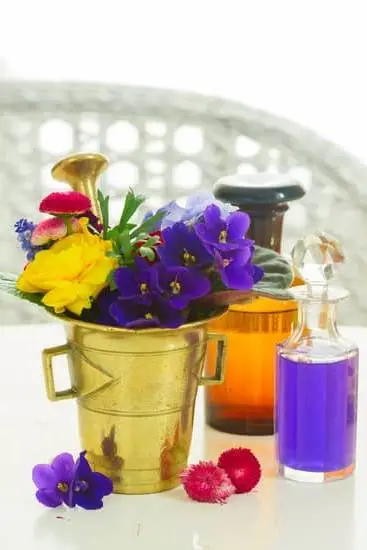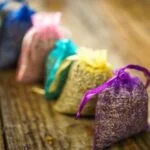Aromatherapy essential oils have been used for centuries to promote overall well-being and relaxation. But can you use these oils on your skin? In this article, we will dive into the world of aromatherapy essential oils and explore their potential benefits for your skin.
Essential oils are highly concentrated plant extracts that capture the fragrant essence and healing properties of various plants. They are commonly used in aromatherapy practices to stimulate the senses and promote a sense of calm, but they also offer numerous benefits for the skin.
In this comprehensive guide, we will debunk common myths surrounding the use of aromatherapy essential oils on the skin and discuss the importance of proper dilution to ensure safety and effectiveness. We will also highlight the top five essential oils with proven skincare benefits, explore different methods of application, and provide useful DIY skincare recipes.
Whether you are new to the world of aromatherapy or a seasoned practitioner, this article aims to provide valuable insights from dermatologists and aromatherapists. So join us as we embark on an exploration of how aromatherapy essential oils can be incorporated into your skincare routine for healthy and radiant skin.
Understanding the Basics
Aromatherapy essential oils have become increasingly popular for their potential health benefits. These oils are derived from plants and are believed to contain therapeutic properties that can promote physical and emotional well-being. But what exactly are aromatherapy essential oils?
- Nature’s Gift: Aromatherapy essential oils are highly concentrated natural extracts obtained from various parts of plants such as flowers, leaves, bark, stems, and roots. They are extracted through methods like steam distillation, cold-pressing, or solvent extraction. Each oil carries the unique fragrance and characteristic of the plant it is derived from.
- Skin Superheroes: Aromatherapy essential oils have long been recognized for their potential benefits for the skin. These oils are rich in vitamins, minerals, antioxidants, and other bioactive compounds that can nourish and revitalize the skin. Different types of essential oils offer different skincare benefits such as promoting cell regeneration, reducing inflammation, balancing oil production, soothing irritation, and improving overall complexion.
- The Power of Scent: Apart from their physical effects on the skin, aromatherapy essential oils also exert a powerful influence on our emotions and mood through their aroma. When inhaled or applied topically, these aromatic compounds can stimulate certain areas in our brain that control emotions and memories. This is why many people turn to these oils for relaxation, stress relief, mental clarity, or even to enhance their mood.
While there is a wide variety of aromatherapy essential oils available in the market today with different scents and properties, it is important to note that not all essential oils are safe to use on the skin without proper dilution. In the next section of this article, we will explore whether it is actually safe to use aromatherapy essential oils directly on the skin or if there are any myths surrounding their use.
Debunking Myths
Aromatherapy essential oils have gained popularity over the years for their potential therapeutic benefits. While these oils are commonly used in diffusers or added to bathwater, many people wonder if they can also be applied directly on the skin. In this section, we will debunk the myths surrounding the use of aromatherapy essential oils on the skin.
One common myth is that all essential oils can be safely used on the skin without any dilution or precautions. However, this is not true. Essential oils are highly concentrated and potent, which means they can cause irritation, sensitization, or even burns when applied undiluted. It is important to remember that not all essential oils are suitable for topical application. Some are too strong and may need to be diluted with a carrier oil before using them on the skin.
To ensure safety and effectiveness when using aromatherapy essential oils on your skin, it is crucial to follow proper dilution guidelines. The general rule of thumb is to use a maximum of 1-2% concentration for most essential oils when diluted in a carrier oil, such as coconut oil or jojoba oil.
This means adding no more than 6-12 drops of essential oil per ounce of carrier oil. It’s important to note that certain essential oils require even lower dilutions due to their potency or potential skin irritations.
It’s also worth mentioning that some individuals may be more sensitive or allergic to certain essential oils, so patch testing is recommended before applying them to larger areas of the skin. Patch testing involves applying a small amount of diluted essential oil on a small area of the skin and observing for any adverse reactions within 24 hours. Furthermore, pregnant women, infants, and individuals with certain medical conditions should consult with healthcare professionals before using aromatherapy essential oils topically.
By debunking these myths and understanding the importance of proper dilution and safety precautions, you can confidently incorporate aromatherapy essential oils into your skincare routine. In the next section, we will explore some of the top aromatherapy essential oils that offer significant benefits for the skin.
The Importance of Dilution
Dilution is a crucial aspect to consider when using aromatherapy essential oils on your skin. While these oils offer numerous benefits for the skin, it is important to approach their use with caution to ensure safety and effectiveness.
Why Dilution Matters
Aromatherapy essential oils are highly concentrated substances extracted from plants. Due to their potency, they should never be applied directly to the skin without dilution. Using undiluted essential oils can lead to skin irritation, sensitization, and even chemical burns.
The process of dilution involves mixing a small amount of essential oil with a suitable carrier oil or another safe medium. This helps to reduce its concentration while still allowing the beneficial properties of the essential oil to be effective on the skin.
Choosing a Carrier Oil
When it comes to diluting essential oils, choosing the right carrier oil is vital. Carrier oils help disperse and distribute the aroma and properties of the essential oil onto the skin while providing moisturization and protection.
Some commonly used carrier oils include jojoba oil, almond oil, coconut oil, and grapeseed oil. Each carrier oil has its own unique properties that can benefit different skin types or conditions. It is important to choose a carrier oil that suits your specific needs and preferences.
Proper Dilution Ratios
The proper dilution ratio depends on various factors such as the type of essential oil being used, the intended purpose of the application, and individual sensitivity levels. As a general guideline for adult topical use, a 2% dilution ratio is recommended for most situations. This means adding no more than 12 drops of essential oil per ounce (30ml) of carrier oil.
However, it is important to note that certain oils require even lower dilutions due to their strong nature or potential skin sensitivity reactions in some individuals. For instance, oils like cinnamon, oregano, and clove should be used at a maximum of 0.5% dilution due to their high potency.
Top 5 Aromatherapy Essential Oils for Skin Benefits
Lavender Essential Oil
Lavender essential oil is one of the most popular and versatile essential oils used in aromatherapy for its numerous skin benefits. It is known for its soothing and calming properties, making it excellent for all skin types, including sensitive and dry skin. Lavender essential oil can help reduce inflammation, redness, and irritation on the skin, making it a great choice for those with acne or eczema-prone skin.
To use lavender essential oil on your skin, you can add a few drops to your favorite moisturizer or carrier oil and apply it directly to the affected areas. Alternatively, you can also create a refreshing facial mist by mixing a few drops of lavender essential oil with distilled water in a spray bottle. Spritz this mixture onto your face throughout the day to keep your skin hydrated and balanced.
Tea Tree Essential Oil
Tea tree essential oil is well-known for its powerful antibacterial and antifungal properties. It is commonly used in skincare products to treat acne due to its ability to kill bacteria and reduce inflammation on the skin. Tea tree oil can also help control excess oil production and unclog pores, making it an effective ingredient for treating oily and acne-prone skin.
To use tea tree essential oil on your skin, you can create a spot treatment by diluting a drop of tea tree oil with a carrier oil such as jojoba or coconut oil. Apply this mixture directly onto blemishes using a cotton swab or clean fingertips. You can also mix tea tree oil with your regular cleanser or toner for an extra boost of antibacterial power.
Rosehip Seed Essential Oil
Rosehip seed essential oil is highly regarded for its anti-aging properties and its ability to rejuvenate the skin. It is rich in antioxidants, vitamins A and C, and essential fatty acids, which help promote skin cell regeneration, reduce the appearance of fine lines and wrinkles, and improve overall skin tone and texture. Rosehip seed oil is also known for its ability to fade scars and hyperpigmentation.
To incorporate rosehip seed oil into your skincare routine, you can mix a few drops with your moisturizer or carrier oil and apply it to your face and neck. Massage the oil gently into the skin in upward motions to boost circulation and absorption. You can also use rosehip seed oil as an under-eye treatment by dabbing a small amount onto the delicate skin around your eyes.
Chamomile Essential Oil
Chamomile essential oil is well-loved for its calming properties and its ability to soothe sensitive or irritated skin. It has anti-inflammatory properties that can help reduce redness, irritation, and itchiness caused by conditions such as eczema or rosacea. Chamomile essential oil is also gentle enough for baby’s delicate skin, making it a versatile choice for the whole family.
One way to use chamomile essential oil on your skin is to add a few drops to a warm bath or foot soak for a relaxing experience. Alternatively, chamomile oil can be mixed with a carrier oil like sweet almond or olive oil and applied topically to calm inflamed or irritated areas of the skin. Remember to always do a patch test before applying any essential oils directly to the skin.
Frankincense Essential Oil
Frankincense essential oil has been used for centuries for its powerful rejuvenating properties on the skin. It has anti-aging benefits that can help reduce the appearance of wrinkles, tighten sagging skin, and improve overall skin tone and elasticity. Frankincense essential oil also promotes healthy cell regeneration, making it an excellent choice for maintaining youthful-looking skin.
To use frankincense essential oil on your skin, mix a few drops with a carrier oil like jojoba or argan oil and gently massage it onto your face and neck. The oil can also be added to your favorite moisturizer or serum for an extra anti-aging boost. You can even create a homemade face mask by mixing a drop of frankincense oil with raw honey or Greek yogurt for a nourishing and revitalizing treatment.
Remember, when using any essential oil on your skin, always dilute it properly to ensure safety and effectiveness. Each essential oil may require different dilution ratios based on its potency and the individual’s skin sensitivity. It is also essential to perform a patch test before using any new essential oils to check for allergies or sensitivities.
Methods of Application
Using aromatherapy essential oils on your skin can provide numerous benefits for your overall well-being. However, it’s important to understand the various methods of application to ensure safe and effective use. Here are some different ways you can incorporate aromatherapy essential oils into your skincare routine:
- Topical Application: One common method of using aromatherapy essential oils on the skin is through topical application. This involves diluting the essential oil with a carrier oil, such as almond oil or jojoba oil, before applying it directly to the skin. This method allows the oils to penetrate the skin and provide their therapeutic effects.
- Massage: Aromatherapy essential oils can also be used during massages for added relaxation and rejuvenation. By mixing a few drops of your preferred oil with a carrier oil, you can create a massage blend that not only nourishes the skin but also enhances the massage experience.
- Facial Steam: Another way to incorporate aromatherapy essential oils into your skincare routine is through facial steaming. Add a few drops of your chosen oil to a bowl of hot water, cover your head with a towel, and lean over the steam for several minutes. The steam will open up your pores, allowing the essential oil particles to enter deep into the skin.
In addition to these methods, you can also add a couple of drops of aromatherapy essential oils to your bathwater for a relaxing and aromatic soak or use them as ingredients in homemade skincare products like lotions or creams.
| Method | Description |
|---|---|
| Topical Application | Diluting essential oils and applying them directly to the skin |
| Massage | Using essential oils during massages for added relaxation and rejuvenation |
| Facial Steam | Inhaling steam infused with essential oils to open up pores and provide therapeutic effects |
| Baths | Adding essential oils to bathwater for a soothing and aromatic experience |
| Diy Skincare Products | Using essential oils as ingredients in homemade lotions, creams, and other skincare products |
Remember, when using aromatherapy essential oils on your skin, it’s crucial to always dilute them properly and conduct a patch test beforehand to check for any potential allergic reactions or sensitivities.
Safety Precautions
Aromatherapy essential oils can offer a range of benefits for the skin, but it is important to exercise caution and consider safety precautions when using them. This section will explore the potential contradictions, risks of sensitization, and allergies that individuals should consider before incorporating aromatherapy essential oils into their skincare routine.
Contradictions refer to situations where certain essential oils may not be suitable for individuals due to specific health conditions or medications they are taking. For example, pregnant women should avoid using essential oils such as clary sage, peppermint, and eucalyptus as they can potentially trigger contractions or affect hormone levels. Similarly, individuals with certain medical conditions like asthma or epilepsy should consult with a healthcare professional before using aromatherapy essential oils on their skin.
Sensitization is another important aspect to consider when using aromatherapy essential oils. Some individuals may develop an allergic reaction or sensitization after repeated exposure to certain oils. This can result in symptoms like rashes, redness, itching, or even more severe reactions.
It is recommended to perform a patch test before applying any oil directly on the skin by diluting the oil and applying a small amount on a small area of skin. If any adverse reaction occurs within 24 hours, it is best to avoid using that particular oil.
Allergies are also a concern when it comes to using aromatherapy essential oils on the skin. Certain oils can cause allergic reactions in susceptible individuals. Common allergenic essential oils include lavender, chamomile, and ylang-ylang. It is advised to be aware of personal allergies and conduct thorough research before trying out new aromatherapy essential oils.
| Safety Precautions | Considerations |
|---|---|
| Contradictions | Avoid certain oils during pregnancy or with specific health conditions |
| Sensitization | Perform a patch test before applying directly on the skin |
| Allergies | Be aware of personal allergies and conduct thorough research before use |
DIY Skincare Recipes with Aromatherapy Essential Oils
Now that we have explored the world of aromatherapy essential oils and debunked myths about their use on the skin, it’s time to delve into some DIY skincare recipes incorporating these wonderful oils. By creating your own skincare products, you have control over the ingredients, ensuring that they are natural and tailored to your specific needs. Here are a few simple yet effective recipes to get you started:
1. Refreshing Facial Toner:
Ingredients:
- 1/4 cup witch hazel.
- 1/4 cup rose water.
- 5 drops lavender essential oil.
- 3 drops tea tree essential oil.
Instructions:
Mix all the ingredients in a small spray bottle. Shake well before each use. After cleansing your face, spritz the toner onto a cotton pad and gently apply it all over your face and neck. This toner helps balance the skin’s pH levels, tighten pores, and reduce inflammation.
2. Nourishing Face Serum:
Ingredients:
- 2 tablespoons jojoba oil.
- 2 tablespoons rosehip seed oil.
- 3 drops frankincense essential oil.
- 3 drops geranium essential oil.
Instructions:
In a small glass bottle with a dropper, mix the jojoba and rosehip seed oils together. Add the essential oils one by one and gently swirl to combine them thoroughly. Apply a few drops of this serum onto clean skin morning and night before applying moisturizer. This nourishing blend helps hydrate, repair damaged skin, and improve elasticity.
3. Soothing Body Scrub:
Ingredients:
- 1 cup sea salt or Epsom salt.
- 1/2 cup coconut oil (melted).
- 10 drops chamomile essential oil.
- 5 drops ylang ylang essential oil.
Instructions:
Combine all the ingredients in a bowl and mix well. Transfer the scrub into a clean, airtight jar. In the shower or bath, gently massage the scrub onto damp skin using circular motions. Rinse off with warm water. This gentle exfoliating scrub will leave your skin feeling soft, smooth, and rejuvenated.
Remember to always perform a patch test before using any new DIY skincare recipe to ensure that you are not allergic or sensitive to any of the ingredients. Additionally, be mindful of the recommended dilution ratios for each essential oil to avoid any adverse reactions. Enjoy experimenting with these recipes as you harness the power of aromatherapy essential oils for healthier and radiant skin.
Expert Advice
When it comes to using aromatherapy essential oils on your skin, it is always valuable to seek the advice of experts in the field. Dermatologists and aromatherapists can provide valuable insights and recommendations to ensure the safe and effective use of these oils for skincare purposes. Their expertise can help you navigate through the vast array of options and choose the right oils for your specific needs.
Dermatologists, as medical professionals specializing in skin health, can offer valuable guidance on which aromatherapy essential oils are safe to use on your skin. They have an in-depth understanding of different skin types, conditions, and sensitivities. By consulting with a dermatologist, you can gain insights into which oils are most suitable for your particular skin concerns, whether it be acne-prone skin, dryness, or signs of aging.
On the other hand, aromatherapists are trained professionals who specialize in using essential oils for therapeutic purposes. They possess a deep knowledge of the properties and benefits of various essential oils. Aromatherapists can help formulate custom blends tailored to your specific skincare needs. They consider factors such as scent preferences, desired outcomes, and any existing sensitivities or allergies when creating a blend that is safe and effective for you.
Both dermatologists and aromatherapists emphasize the importance of conducting patch tests before applying any new essential oil directly on your skin. Patch testing involves applying a small amount of diluted oil to a small area of your forearm or back and observing any adverse reactions over 24 hours. This precautionary step helps identify potential allergies or sensitivities before applying an oil more extensively.
By seeking advice from dermatologists and aromatherapists, you can make informed decisions about incorporating aromatherapy essential oils into your skincare routine. Their expertise will guide you in selecting appropriate oils for your specific skin type or condition while ensuring safety and effectiveness. Remember, everyone’s skin is unique, and expert advice can help you find the best approach to achieve healthy and radiant skin through the power of aromatherapy essential oils.
Conclusion
In conclusion, aromatherapy essential oils can be a powerful tool for promoting healthy and radiant skin. While there are some debates surrounding the use of these oils on the skin, with proper understanding and precautions, they can offer numerous benefits. It is important to remember that not all essential oils are suitable for topical use, and dilution is key to ensuring both safety and effectiveness.
When using aromatherapy essential oils on your skin, it is crucial to choose high-quality oils that are suited for topical application. Additionally, proper dilution is necessary to reduce the risk of sensitization or adverse reactions. Diluting the essential oil in a carrier oil or using it in skincare recipes can help maximize its benefits while minimizing any potential risks.
Furthermore, understanding different methods of application can also enhance the efficacy of aromatherapy essential oils for skin benefits. Whether through massage, inhalation, or adding them to skincare products, finding the right method that works for you can make a significant difference in achieving healthy and radiant skin.
Seeking expert advice from dermatologists and aromatherapists is always recommended when incorporating aromatherapy essential oils into your skincare routine. They can provide personalized recommendations based on your specific needs and concerns.
Overall, when used properly and safely, aromatherapy essential oils have the power to transform your skin, providing hydration, soothing properties, anti-aging effects, and more. By understanding their basics and following best practices, you can harness the full potential of these natural remedies for healthy and radiant skin.
Frequently Asked Questions
Can you use aromatherapy oil on skin?
Aromatherapy oils can indeed be used on the skin, but it is important to exercise caution and follow proper guidelines. Some essential oils are considered safe for direct application to the skin, while others may cause irritation or sensitization.
It is crucial to dilute the essential oil with a carrier oil before applying it to the skin in order to ensure safe use and prevent any adverse reactions. Additionally, certain essential oils may be more suitable for specific skin types or conditions, so it is advisable to consult a qualified aromatherapist or skincare professional for personalized recommendations.
Can aromatherapy essential oils be used topically?
Yes, aromatherapy essential oils can be used topically when properly diluted and applied according to safety guidelines. Topical application of essential oils allows them to absorb into the bloodstream through the skin, providing potential therapeutic benefits.
However, it is crucial to dilute essential oils with a suitable carrier oil before applying them topically in order to minimize the risk of skin irritation or sensitization. Each essential oil has specific recommended dilution ratios depending on its potency and intended use, so it is important to familiarize yourself with these guidelines or seek guidance from professionals experienced in aromatherapy.
Can you put aromatherapy on your skin?
Aromatherapy can be applied directly onto the skin, but it is vital to exercise caution and proper dilution techniques when doing so. Pure undiluted essential oils should never be directly applied onto the skin as they are highly concentrated and can potentially cause harm.
To apply aromatherapy on your skin safely, diluting the essential oil with a suitable carrier oil or incorporating it into cosmetic products such as lotions or creams is recommended. By doing this, you can enjoy the aromatic benefits of aromatherapy while minimizing any potential risks of irritation or sensitization that may occur when using undiluted essential oils directly on your skin.

Are you looking for a natural way to improve your health and wellbeing?
If so, aromatherapy may be the answer for you.





